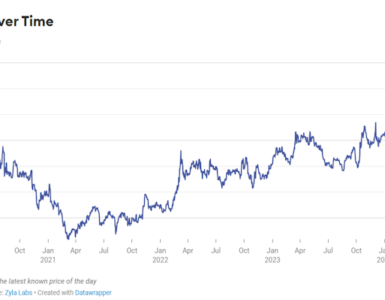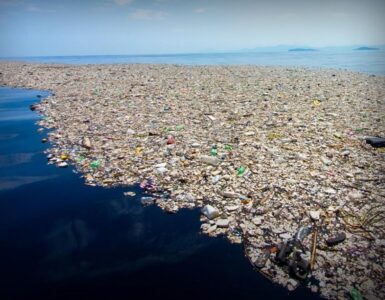How to Clean Your Drain Safely
Commercial drain cleaners are very toxic, using strong caustic chemicals to break down the “gunk” that builds up in your household drains.
We highly recommend using plain white vinegar from your grocery store, since it almost always keeps your drains clean, without the possibility of exposing you or your family to the toxic commercial drain cleaners.
Vinegar is also much safer for your drain pipes, since the commercial cleaners can cause corrosion if you have any metal in your drain pipe system, and many systems do.
Vinegar will not damage your septic tank, if you use one, but commercial cleaners can kill some of the good bacteria in your septic tank, potentially shortening the life of your leach field.
Drain-cleaning Procedure
To clean a clogged drain, simply pour 2 cups of vinegar into the sink and let it set for at least 15 minutes before running warm water to flush the pipe. If it doesn’t work the first time, put in another 2 cups and wait at least 30 minutes befroe rinsing again.
For persistent clogs, we recommend buying a hose-type hydraulic drain cleaner that attaches to your faucet, with a hose small enough to push down the drain and flush out the clog.
You don’t need to wait for your drain to get clogged to use vinegar. Use vinegar in any drain that is slowing down, pouring 2 cups into the drain and leaving it there as long as you like before rinsing.
Warning: Be careful not to use boiling or near-boiling water to rinse out the vinegar if you have plastic drain pipes, as the hot water may warp or melt those pipes, causing leaks.
Never Let Anyone Taste or Eat an Adhesive First Aid Strip
No matter what shape it comes in, the sticky adhesive on store-bought bandages is not healthy to eat.
Adhesive bandages (a.k.a. Band-Aids), first invented and manufactured by Johnson & Johnson in 1920, are very helpful to put on cuts and scrapes, and help keep these wounds from getting dirty or letting bacteria into the site of the wounds.
However, we have a strong word of caution about these adhesive bandages: Never let a child, pet or adult lick or ingest any part of an adhesive bandage, especially the adhesive strips.
The adhesive part of the bandage often contains a chemical called toluene diisocyanate (TDI), a highly toxic chemical commonly used in the manufacture of adhesives (from what we could find out, the gauze part between the adhesive tabs is commonly just sterile material).
The most serious toxic effects are through breathing in fumes of TDI, but the Agency for Toxic Disease Registry (ATSDR), which is part of the federal Center for Disease Control (CDC), tells us that “ingestion would probably produce chemical burns of the lips, mouth, throat, esophagus, and stomach”
The concentration of TDI in adhesives varies, but to be safe, we recommend you keep adhesive bandages in a place where children can’t reach them, and to use them only after teaching your children that these bandages should be worn and not consumed.
Some substances have been proven to be toxic and other substances that have not.
There are situations where manufacturers do not have to disclose information about toxic chemicals in certain products (many pesticides, for example) and offer warnings about unknowing exposure to these chemicals.
Band-aids Pros and Cons of Compact Flurescent Lamps
Today’s lesson on taming the toxic menace (dangerous household chemicals) is how to deal with broken fluorescent light bulbs.
Compact Fluorescent Lamps (CFLs ) are popular because they use much less electricity than their incandescent counterparts.
But CFLs are not all they are “cracked up” to be (pun intended). They contain up to 5 milligrams of mercury, and when they break, mercury dust gets spilled on the floor and into the air.
If you break a CFL, don’t use your vacuum to clean it up! Most of the mercury dust inside the bulbs will go right through your vacuum filter, causing the vacuum to blow the mercury all over the house and everything (and everyone) in it.
Mercury is a very toxic metal that builds up in your body and can make you very sick, affecting your brain, nervous system and kidneys.
Recently, at a water treatment plant in the northeastern US, a mercury device leaked about 5 pounds of mercury onto the floor in the basement.
The supervisor used a wet/dry vacuum to clean up the spill, and unknowingly blew mercury all over the basement. The supervisor was tested and they found high levels of mercury concentrated in his blood.
He and the other workers spread it all over the rest of the plant by walking through the dust and tracking it to the upper floors, parking lot and their cars. Even worse, the workers wore mercury contaminated clothing home.
At best, they took their shoes off outside and put the clothes in the laundry. At worst they left their shoes on and wore those same clothes around their homes.
You can see from this example that sucking up mercury in your household vacuum is bad. Similarly, you will spread the mercury around if you use a broom to sweep it up, or if you throw a rug or clothes into your washer or dryer in an attempt to clean spilled mercury off.
So what should you do if you break a CFL?
If the spill is on a smooth surface, it’s very straight-forward if you follow the steps on the USEPA web site. Note that if the spill is on a carpet, the carpet should be bagged up and thrown away.















